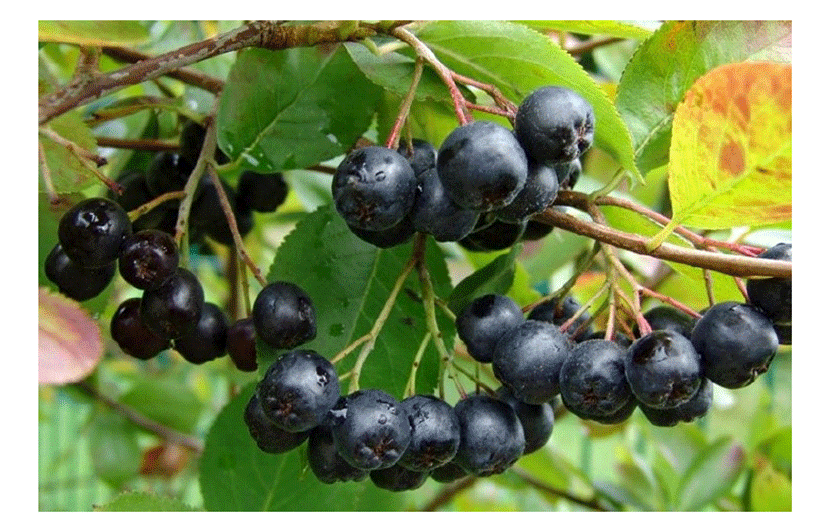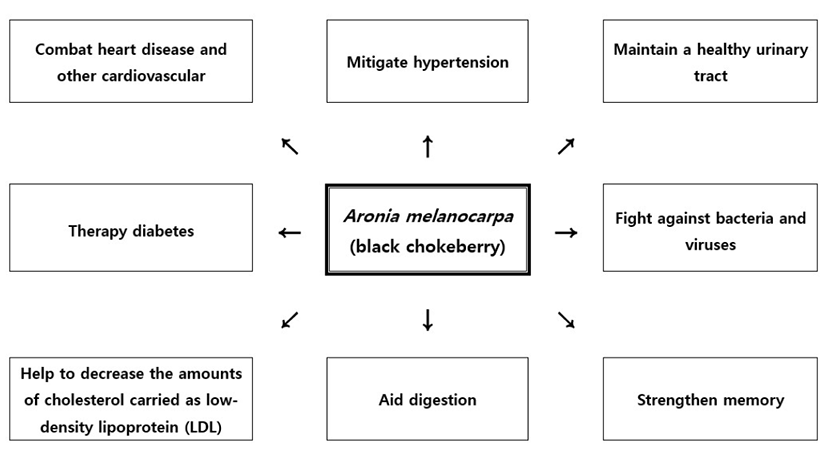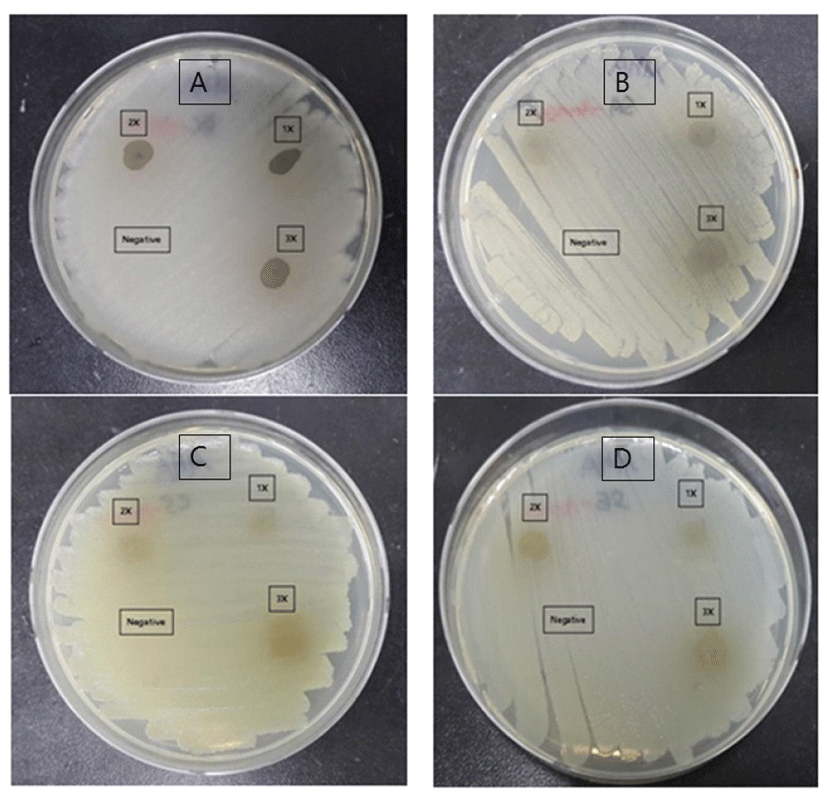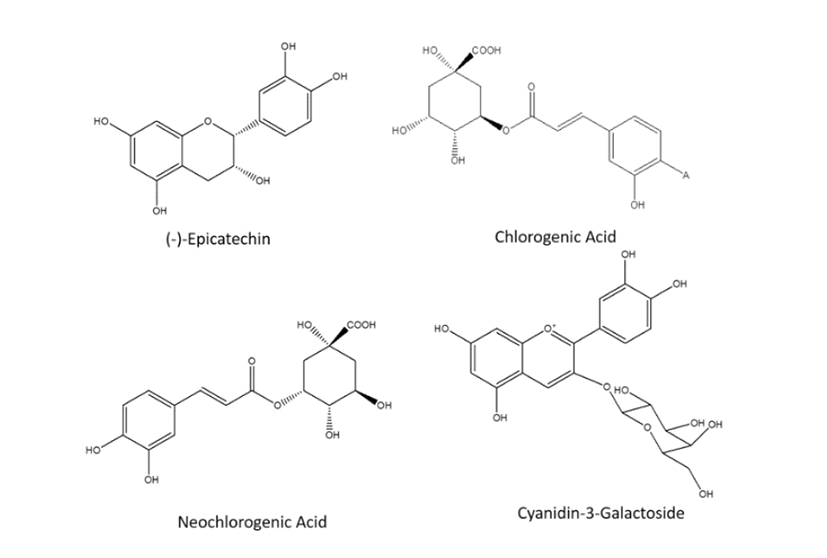Introduction
Recently, the usability of natural extracts has dramatically increased for improving human’s health (Jakobek et al., 2007; Jurikova et al., 2017). Especially, among various natural compounds, Aronia has received important attention in recent years due to their various positive effects for human’s health (Kokotkiewicz et al., 2010; Park and Hong, 2014; Banjari et al., 2017). And Aronia could be classified into three types of by color; (1) Red chokeberry as Aronia arbutifolia. (2) Purple chokeberry as Aronia prunifolia, and (3) Black chokeberry as Aronia melanocarpa (Chrubasik et al., 2010; Borowska and Brzoska, 2016). Especially, among three types, many researchers had a focus on Aronia melanocarpa (black chokeberry) (Borowska and Brzoska, 2016; Sic Zlabur et al., 2017). In general, Aronia melanocarpa (black chokeberry) was originated from the eastern parts of North America and Canada, and then was introduced into Europe about a century ago (Chrubasik et al., 2010; Jurikova et al., 2017). Since the middle of the 20th century, Aronia melanocarpa (black chokeberry) have been cultivated and medicinally used in the former Soviet Union (Chrubasik et al., 2010; Borowska et al., 2017) (Fig. 1).
According to heretofore known, Aronia melanocarpa (black chokeberry) contained many bioactive compounds such as anthocyanins, carotenoids, fatty acids, flavonoids, phenolic compounds, vitamins and so on (Bräunlich et al., 2013; Nguyean and Hwang, 2016; Sic Zlabur et al., 2017). Furthermore, Aronia melanocarpa (black chokeberry) have a greater content of phenolic constituents than most of the other berries, because of reflecting antioxidative potency (Chrubasik et al., 2010; Banjari et al., 2017) (Fig. 2).
Until now, the most common Aronia melanocarpa (black chokeberry) products were powder, syrup, juice, fruit jelly, fruit tea, liquor, wind, and so on (Chrubasik et al., 2010). Therefore, it would be the best way for the application of Aronia melanocarpa (black chokeberry) to add to various juices of other fruit species for improving both the organoleptic and nutritional characteristics of the final product (Kokotkiewicz et al., 2010; Banjari et al., 2017).
Foodborne pathogenic bacteria could be transmissible to humans through milk and dairy products, and also could cause various disease (Vasavada, 1988; Zeinhom and Abdel-Latef, 2014). Hence, attention would be focused on milk and dairy food contaminated with foodborne pathogenic bacteria, because milk was considered as a high quality and nutrition-rich food for human beings (Theresa and Nicklas, 2003). Especially, the high quality of milk is mainly referred to its composition and hygiene that are provided during the production and storage of milk (El-Baz et al., 2017). However, if the hygienic conditions are not applied properly, the milk could be contaminated by microorganisms leading to its early spoilage (Oliver et al., 2005; Nanu et al., 2007). Furthermore, milk and dairy products could harbor a variety of microorganisms and also could be important sources of foodborne pathogens (El-Baz et al., 2017). The presence of foodborne pathogens in milk and dairy products would be due to excretion from the udder of an infected animal and to direct/indirect contact with contaminated sources in the dairy farm environment (Vasavada, 1988; Oliver et al., 2005; Nanu et al., 2007; Zeinhom and Abdel-Latef, 2014; El-Baz et al., 2017). In this study, among various foodborne poisoning bacteria, 4 kinds of foodborne poisoning bacteria – Staphylococcus aureus, Cronobacter sakazakii, Salmonella Enteritidis., and Bacillus cereus – which occur most frequently in milk and dairy products were selected and investigated.
Until now, there was very few studies about the inhibition against various foodborne pathogenic bacteria using the crude extracts from Aronia melanocarpa (black chokeberry). Therefore, this study was aimed at investigating the antibacterial activity of Aronia melanocarpa (black chokeberry) on Staphylococcus aureus, Cronobacter sakazakii, Salmonella Enteritidis., and Bacillus cereus so as to improve the quality of various dairy products by adding them as natural food additives.


Materials and Methods
The powder of Aronia melanocarpa (black chokeberry) manufactured in Finland was purchased from Kiantama OY (Finland). The dried powder of Aronia melanocarpa (black chokeberry) was macerated in 95% ethanol for 48 hours with occasionally stirring at ambient temperature. And then, the soluble ingredients were concentrated by rotary evaporator at 50℃ until dryness, and the yield was obtained by ethanol extraction type. These stock solutions were filtrated through 0.2 mm Millipore and stored at —20℃ before use.
Staphylococcus aureus ATCC6538, Cronobacter sakazakii KCTC2949, Salmonella Enteritidis 110, and Bacillus cereus ATCC10876 were obtained from Center for One Health, College of Veterinary, Konkuk University in Seoul, Korea. These bacteria were grown on nutrient agar (NA) (Oxoid, UK) overnight. Colonies were transferred into tubes containing cryopreservation fluid according to the instruction of the manufacturer (Original Microbiology Bead Storage System, STS, Technical Service Consultants Limited, UK). The beads were stored at —70℃ until use.
The antibacterial activity of Aronia melanocarpa (black chokeberry) were tested on Staphylococcus aureus ATCC6538, Cronobacter sakazakii KCTC2949, Salmonella Enteritidis 110, and Bacillus cereus ATCC10876 using by the spot-on-lawn assay with some modifications (Cadirci and Citak, 2005). All test bacteria were cultured on Mueller-Hinton broth (MHB; Difco) and incubated at 37℃±0.5 for one day. The culture broth was diluted using MHB to 0.5 McF and spread onto Mueller-Hinton agar (MHA; Difco) using sterilized cotton swabs. A total of negative control (0 μL), 1X (10 μL), 2X (20 μL), and 3X (30 μL) of Aronia melanocarpa (black chokeberry) extract was directly dropped onto the surface of the MHA, respectively. The plates were incubated for one day at 37±0.5℃, and the inhibition zone was observed.
All experiments were carried out independently in triplicate experiments. The inhibition of various concentration of Aronia melanocarpa (black chokeberry) ethanol extracts against Staphylococcus aureus ATCC6538, Cronobacter sakazakii KCTC2949, Salmonella Enteritidis 110, and Bacillus cereus ATCC10876 were evaluated by one-way analysis of variance (ANOVA). Statistical significance was accepted at the p=0.05 level.
Results and Discussion
The ethanol extract of Aronia melanocarpa (black chokeberry) showed various levels of antibacterial activity when tested by the spot-on-lawn assay (Fig. 3). These results obtained showed that ethanol extract of Aronia melanocarpa (black chokeberry) exhibited antibacterial activities against Bacillus cereus, and the inhibitory activity of Aronia melanocarpa’s (black chokeberry) ethanol extracts was shown as a whole regardless of the increase in the concentratin (Fig. 3). Although the final result of antimicrobial activity of Aronia melanocarpa’s (black chokeberry) extract by ethanol against Staphylococcus aureus was negative, it did not seem to be effective at all (Fig. 3). Hence, it is likely that the higher concentration, the more effective it will be. Whereas the other two bacteria – Cronobacter sakazakii, and Salmonella Enteritidis – did not show any inhibition by the ethanol extract of Aronia melanocarpa (black chokeberry) (Fig. 3).
Also, Park and Hong (2014) reported that the physiological activities of Aronia melanocarpa’s (black chokeberry) extracts was affected by various extraction solvent such as hot water, methanol, and ethanol. The yield of Aronia melanocarpa’s (black chokeberry) extracts by ethanol extract was 84.50%, by hot water extract was 84.05%, and by methanol extract was 76.20%, respectively. But, regardless of the extraction solvents, the total sugar content was 35.56∼37.68 g/100 g (Park and Hong, 2014). Therefore, Aronia melanocarpa (black chokeberry) was extracted with ethanol in this study.
Banjari et al. (2017) reported that Aronia melanocarpa’s (black chokeberry) extracts could have various bioactive compound for improving human’s health (Fig. 4). In general, the efficacy comparison of natural materials was carried out by solvent extraction (methanol, ethanol, water, and so on) (Jakobek et al., 2007; Borowska et al., 2017). According to Park and Hong (2014), the total anthocyanin content by methanol extract was 395.10 mg/100 g, by ethanol extract was 318.61 mg/100 g, and by hot water extract was 252.82 mg/100 g, respectively. Also, the among various anthocyanin composition, the cyanidin-3-galactoside was 364.65 mg/100 g, the cyanidin-3-arabinoside was 163.06 mg/100 g, and the cyanidin-3-glucoside was 35.69 mg/100 g by the methanol extract (Park and Hong, 2014).
Also, the 1,1-diphenyl-2-picrylhydrazyl (DPPH) radical scavenging activities by methanol and ethanol extracts at 100∼1,000 μg/mL was 8.90∼69.21%, 7.96∼70.01%, respectively, and the superoxide radical scavenging activities of all the extracts would be improved with an increase in the treatment concentration (Park and Hong, 2014). The ferric reducing antioxidant power (FRAP) by methanol and ethanol extract at 100∼1,000 μg/mL was 67.32∼812.78 μM, 57.14∼817.87 μM, respectively (Park and Hong, 2014). The tyrosinase inhibitory activity by ethanol extract was 23.03∼33.82% (100∼1,000 μg/mL) and it was higher than that of the other extracts (Park and Hong, 2014). Especially, the cancer cell growth inhibition activity by ethanol extract was 76.86% at 1,000 μg/mL on HeLa cell line and it was significantly higher than hot water and methanol extracts (Park and Hong, 2014).
Especially, through increasing outbreak of various drug-resistant pathogenic bacteria, the potential antibacterial activity by the unknown plant-derived substance became increasingly interested (Savoia, 2012; Liepina et al., 2013). Liepina et al. (2013) reported that the antimicrobial activity of Aronia melanocarpa (black chokeberry) and Sorbus aucuparia extracted by aqueous and ethanolic method was exhibited antibacterial activity against Gram-positive bacteria Bacillus cereus and Staphylococcus aureus, but they did not have antifungal influence. In this study, although a similar result was obtained in Bacillus cereus, Staphylococcus aureus was not inhibited.
Also the extracts inhibited the growth of Gram-negative bacterium Pseudomonas aeruginosa but did not have influence on Escherichia coli (Liepina et al., 2013). In this study, similar trends in previous studies were found, and Cronobacter sakazakii and Salmonella Enteritidis were not inhibited.
In general, ethanolic extracts demonstrated equal or larger antibacterial effects than aqueous extracts (Liepina et al., 2013). Also, according to several previous literatures, better results usually have been obtained with alcoholic than with aqueous extracts (Krisch et al., 2008; Chitra et al., 2012; Liepina et al., 2013). Since ethanol was the most commonly used organic solvent, the finished products could be relatively safely used (Low Dog, 2009).
Furthermore, according to the report of Banjari et al. (2017), Aronia melanocarpa (black chokeberry) had been reported to possess (1) anti-achlorhydia, (2) anti-hypertension, (3) anti-hemorrhoids, (4) anti-convalescence, (5) anti-avitaminoses, (6) anti-atherosclerosis, (7) anti-diabetes, and so on (Fig. 2).
Over all, Aronia melanocarpa (black chokeberry) berry juice and plant extract has displayed evidence as a potent modulator of hyperglycemia-related oxidative stress which is directly correlated with its complications, in particular, cardiovascular disease (Jurikova et al., 2017). Also, people with increased cardiovascular risk (i.e., with abdominal obesity, mild hypercholesterolemia, grade I hypertension) seem to benefit more from the consumption of Aronia melanocarpa (black chokeberry) berry juice and extract (Jakobek et al., 2007; Sic Zlabur et al., 2017).
In conclusion, this study demonstrated the potential of Aronia melanocarpa (black chokeberry) to inhibit the growth of Bacillus cereus and Staphylococcus aureus as antimicrobial activity, except for Cronobacter sakazakii and Salmonella Enteritidis. Hence, this study indicated that Aronia melanocarpa (black chokeberry) might be applicable in natural medicine and food as a source of antibacterial products, and also could be a useful for functional food material in the food industry. Additionally, the Aronia melanocarpa (black chokeberry) fruit and its extract appear to have a multitude of beneficial effects against other disease conditions, which could potentially be explored and scientifically substantiated through systematic studies and investigations.








